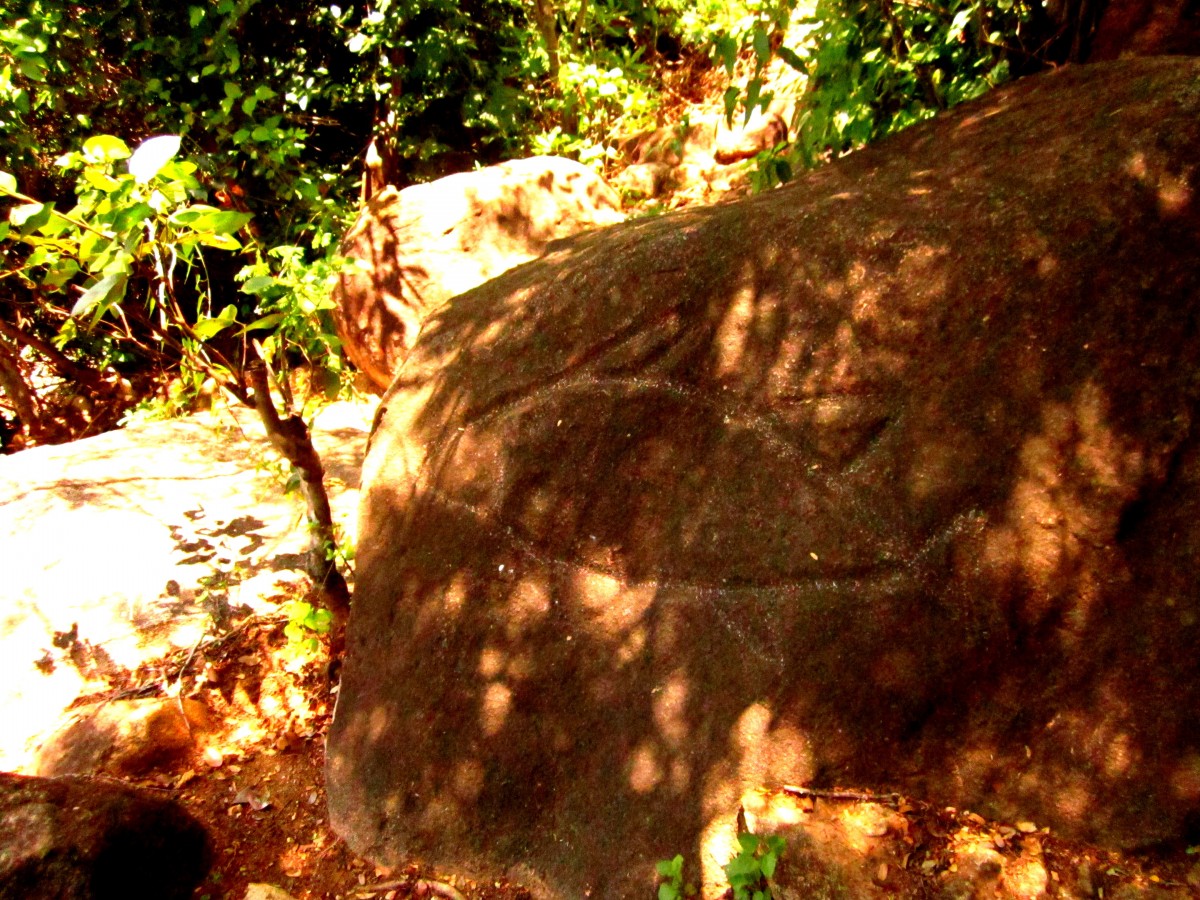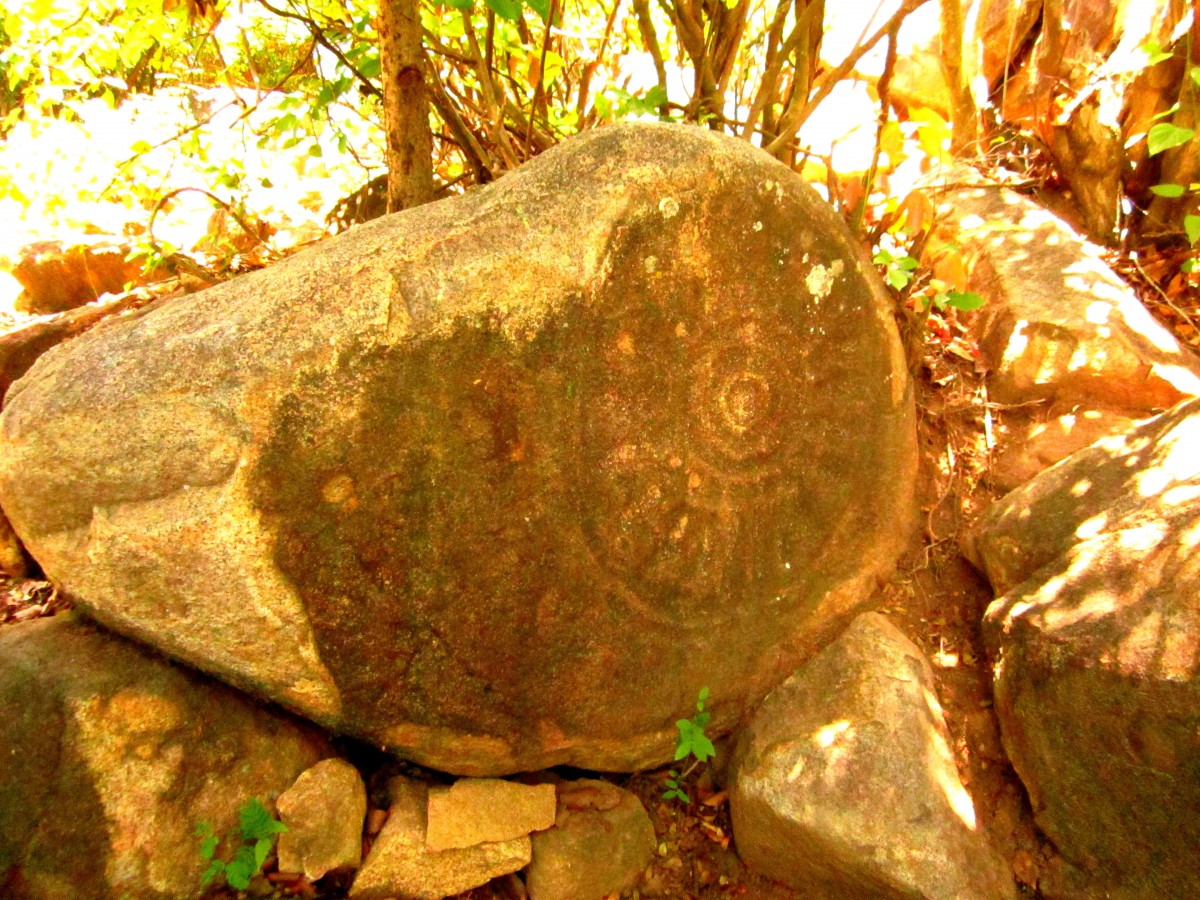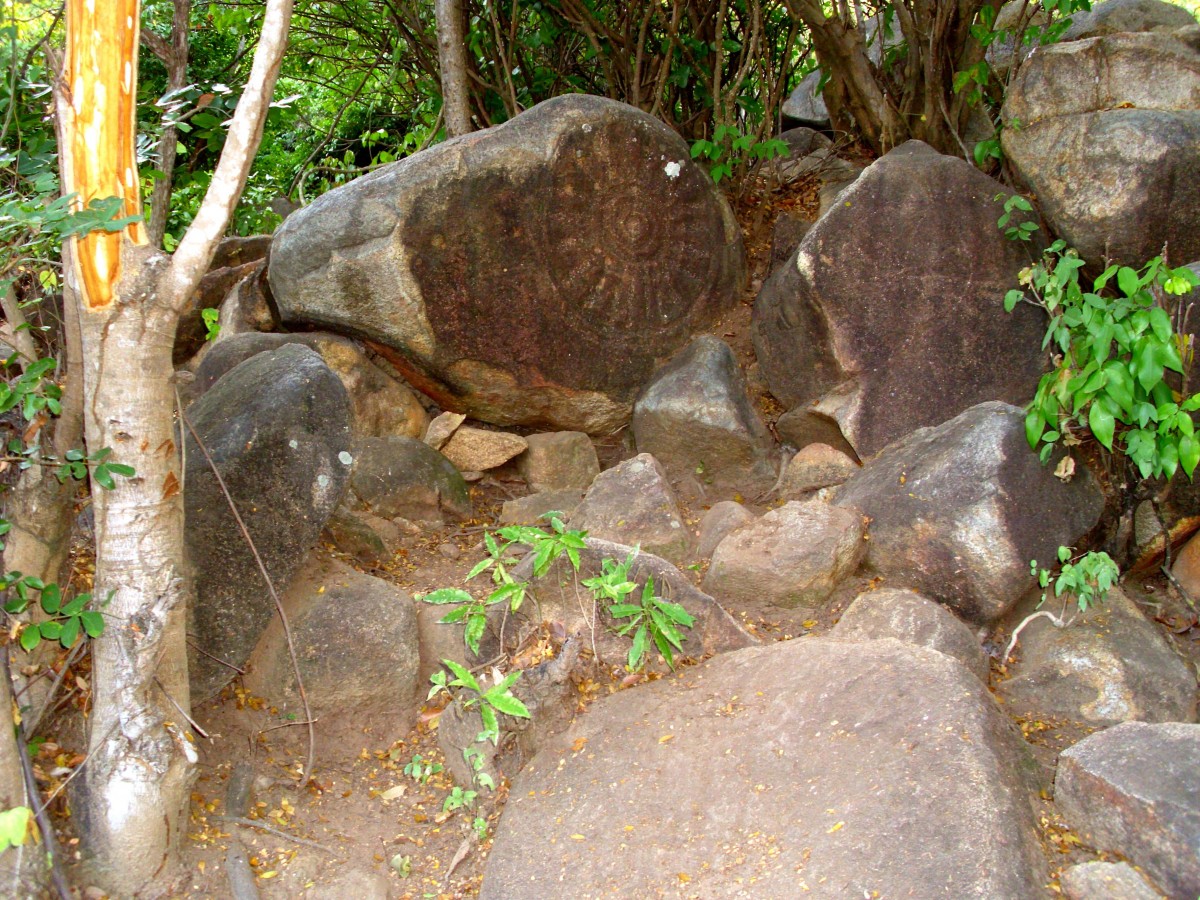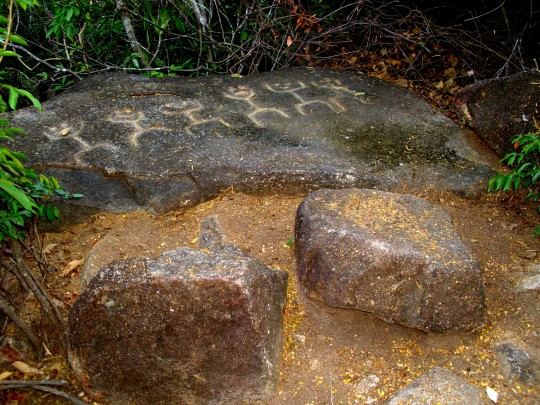The site is on the north side of the Cerro de la Bola in the ejido of La Sabana, municipality of Acapulco. This settlement forms part of another much larger one established on the lower and flatter land to the north. In addition to the ritual site with rock carvings now found in the section that is open to the public, it had many large structures which were lost as a result of urban growth in the 1960s. Its origins were in the Early Classic, around 400 AD, while its apogee was in the Epiclassic (600-900 AD) and the population dwindled into the Early Postclassic (900-1200) when the site was abandoned.
Acapulco and its surrounding area are especially rich in rock carvings. There are sites with petroglyphs along the coastal strip which runs from Revolcadero beach, passing through the bays of Puerto Marques and Santa Lucia towards Magueyitos beach, close to the Pie de la Cuesta. The glyphs indicate the importance of representing social, economic and religious activities by a variety of forms and means of expression, and they provide evidence of human presence from the third millennium BC. With its well protected bays and with opportunities for finding resources on the coastal plain at the foot of the hills, on the sea shore and at sea, the strategic location of Acapulco has served human settlement from very ancient times up to the present.
As with other parts of Acapulco and its surrounding area, La Sabana is a site with a wealth of rock carvings. The anthropomorphic, zoomorphic (both terrestrial and marine animals), calendar-based and abstract motifs were produced by carving and abrading the blocks of granite.
These graphic expressions provide information on the site and the calculation of time. There are very many rectangular and circular format calendar counts together with various points and lines. There is also a plethora of representations of the rain and monkey gods, the latter possibly spider monkeys which were present in the state of Guerrero in pre-Hispanic times. References to the animal world are enriched by serpents and fish, which lived alongside the pre-Hispanic settlers of Guerrero, as can be seen from the imagery carved into the rocks.
- The settlement remained abandoned for several centuries. It was reoccupied by the Tezcatec, Tuztec and Yopi people at the end of the pre-Hispanic era.
- The original society worshiped water deities, carrying out rain ceremonies and recording natural phenomena and the passage of the stars through the firmament, which enabled them to establish their farming calendar.
-
+52 (747) 471 7121
-
This email address is being protected from spambots. You need JavaScript enabled to view it.
















